Let’s be real. No one really talks about the logistics of van life. Rather, it’s Instagram reels showcasing how incredibly freeing van life is with scenes from some of the most beautiful places in the world. It looks so enticing from afar.
Truly, I adore the freedom and coziness of van life in New Zealand and plan to keep doing it in the future once I leave the country. But I definitely came into this experience with a bit of a rose-colored perception about the unique challenges of van life. Having a van is actually quite a bit of work!
In the past year, I’ve learned A LOT about van life while mostly free camping around New Zealand (or “freedom camping” as they call it here). My goal is to inform any newbie van lifers by sharing some of the things that not many people talk about and a few things I learned along the way as someone who was brand new to full-time van life.
1. Smart storage space is essential.
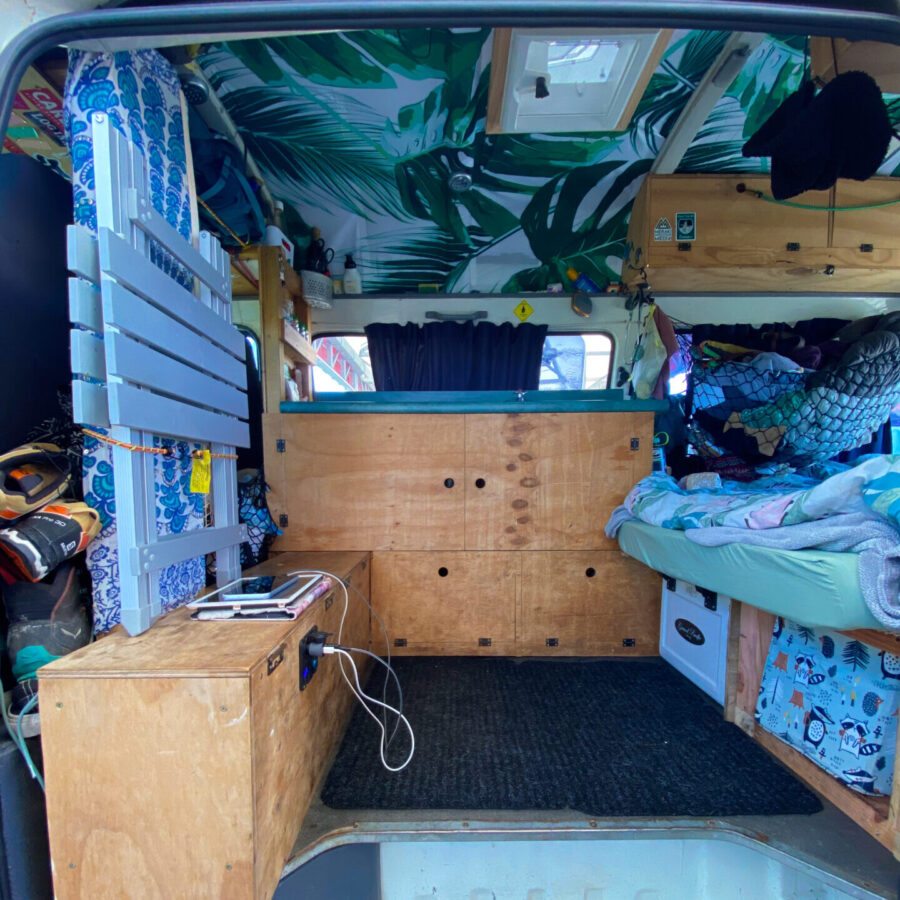
Getting used to the smaller space in a van takes time (especially if you’re with another person). No matter what size your van, the key is to optimize the little space you have as much as possible – buying or designing a van with the most efficient use of space makes van life SO much easier.
There are many, many ways to design creative use of space in a van. Scouring Facebook Marketplace and Instagram will also help with some visual ideas to make your van dream a reality. Below are a few things to consider when buying or looking to convert your first van:
Is the van fully indoor, or will you have to do some things outside the van?
Some smaller van designs have kitchens built out the back, so cooking happens underneath the open back door, but doesn’t offer much exposure from the elements. Some larger vans are equipped with an indoor kitchen, which are more ideal for shelter from all elements. Even larger outfits might have a shower and toilet, which are typical in something like a Sprinter van or RV. If your van doesn’t have them, you’ll be spending time looking for places to shower and use the toilet while living in the van.
How much of your given space is packable or convertible?
Having things that pack up compactly for storage means you can optimize the space you have. For example, we use a portable cooking stove with a 2 kg gas canister in our van, which fits nicely on the countertop when in use, but also folds up and can be stowed underneath when we are driving or need to use the space for other things. We also have camp chairs and a small camp table which fold up for easy storage. When we bought our van, we swapped our bulky tea kettle and bucket for a collapsible tea kettle and collapsible bucket which opened up a lot of space in our cabinets, too.
Further, many vans have various options to “convert” existing spaces for different uses. For example, many of the smaller vans that people buy in New Zealand come with a bed which converts into a table and and bench seating. Our van was built with this conversion setup, but since some of the kitchen cabinets also double as a bench, we have gotten away with never needing to convert our bed. Plus, our foldable table also fits between us inside when we are eating, so we never have to go without a table either.
Do you need more storage space in your van?
Simply by adding mesh netting and hooks, you can create space out of thin air in a van. This helped a lot for us to organize our stuff better!
Underbed storage may be sufficient for some things, like hiking gear, backpacks, and ski gear. If you don’t have enough space underneath the bed or have large items like bikes or kayaks, you’ll need exterior storage on your van, such as a roof or bike rack.
2. Water is a precious resource.

Oh boy did I ever take this for granted before I lived in a van! Say goodbye to endless water running from your household tap. Now, every drop of water must be sourced by the person using it: you. This means that every dish you wash, every time you wash your hands or brush your teeth, or any other time you need to use that water source, your supply will empty.
When living in a van, you will find that many of your decisions throughout a typical week will depend on you finding water. Learning how to conserve your water will help lessen the hassle of finding and filling your water supply.
3. Plumbing in your van is your ultimate ticket to self-sufficiency.
In my opinion, a sink with running water is the bare minimum of any van conversion in the way of plumbing, ideally with an electric tap. (Hand pumping your water every time you need it WILL get cumbersome.) Trust me, you don’t want to be that weirdo bringing your dishes to wash in the library or other public bathroom, holding up the line of people who REALLY, REALLY have to pee. The same goes for any time you need to brush your teeth, clean your hands, or wash your veggies. A sink and running water will make your life so much easier when free camping at places without any facilities. If you have the space for it, a toilet and shower are van life luxuries!
Having plumbing setups in a van aren’t any cake walk though. This also comes with its own extra effort and planning to fill and empty water tanks. I feel that the benefit of having running water in a van far outweighs the extra responsibilities it comes with, however!
4. Following Leave No Trace principles is your responsibility.
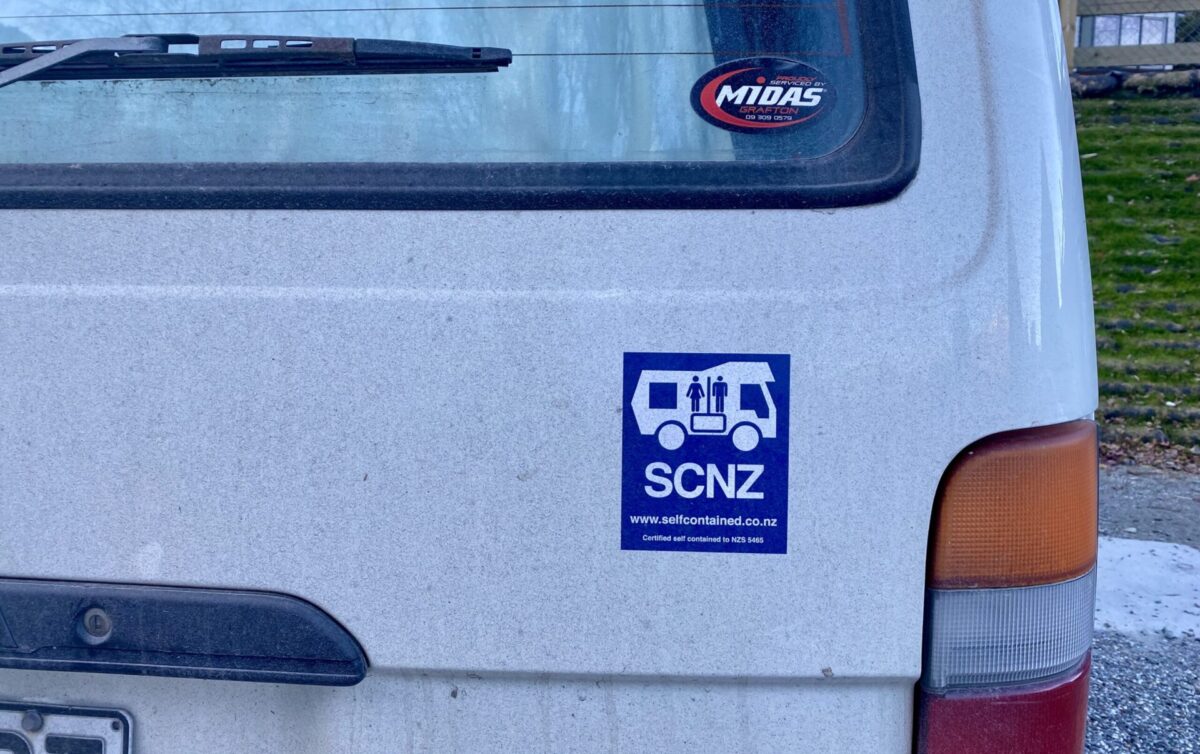
Most people associate these principles with camping and recreating outdoors, but I can’t emphasize enough how important Leave No Trace principles are to the sanctity of van life, especially when free camping! Not following these guidelines can spoil beautiful areas in nature, piss off the locals, and jeopardize the privilege and freedom of van life for everyone.
While van lifing it for the last year in New Zealand, I’ve seen firsthand how fed up people have become after years of freedom campers trashing the natural beauty here. New Zealand has worked hard to preserve the environment by passing laws that require vans be “self-contained” – which is a fancy way of saying that free campers have the tools to be self-sufficient with onboard sinks, toilets, and trash bins. While I think these laws have helped both to keep New Zealand clean and the freedom campers to leave no trace, there are so many restrictions on where vans can park here that have made living in a van while free camping just so much harder than it used to be. If previous bands of travelers had been more respectful of the land, we wouldn’t be seeing so many restrictions on van life now.
Here are some general guidelines to follow:
- Don’t have fires unless explicitly permitted in an established fire ring.
- Pack it in, pack it out – dispose of trash properly in a trash bin.
- Don’t leave your shit out for the world to see (and smell) – use a proper toilet.
- Bathe in showers, not rivers.
- Same goes for dishes – don’t wash them in waterways.
- Basically, be respectful of the land and the other people who use it!
5. Ventilation is the unsung hero of van life comfort.
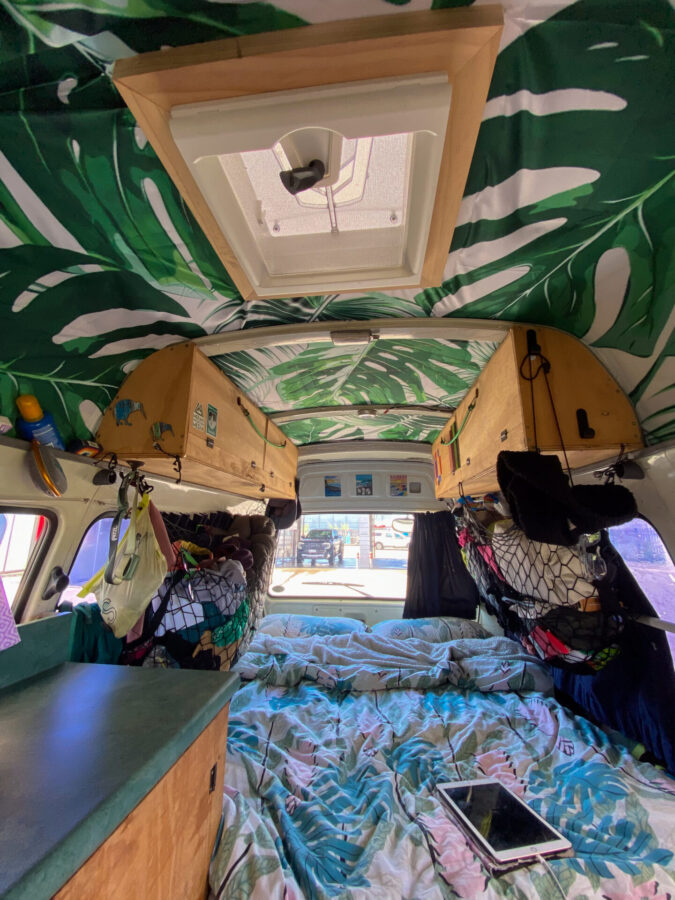
This is probably the most underrated and least considered aspect of van life. I personally didn’t realize how important ventilation was until my partner and I bought a van with no roof vent and then saw the moisture and mold grow in my van in a matter of weeks after moving to Queenstown at the beginning of the winter season.
Basically, my experience living in a van without proper ventilation was also a lesson in science. When cooking or even simply breathing, moisture gets released into the air. We noticed that a lot of moisture was accumulating on the roof of our van with no way to escape. Furthermore, we discovered moisture on the wood boards underneath our mattress topper, which we learned after doing some research was a natural effect of our breathing and sleeping on it every night.
As you can imagine, this created a pretty uncomfortable living environment for us! After opening the windows didn’t work, we realized that we were lacking two very important items for van life: a roof vent and an underlay mat (designed for underneath RV beds, but they work for van beds too). They both work by creating more airflow where before moisture was getting trapped. Both of these things have made an AMAZING difference in van life comfort and dryness! I can’t emphasize them enough!
6. For temperature regulation, insulation is your best friend.
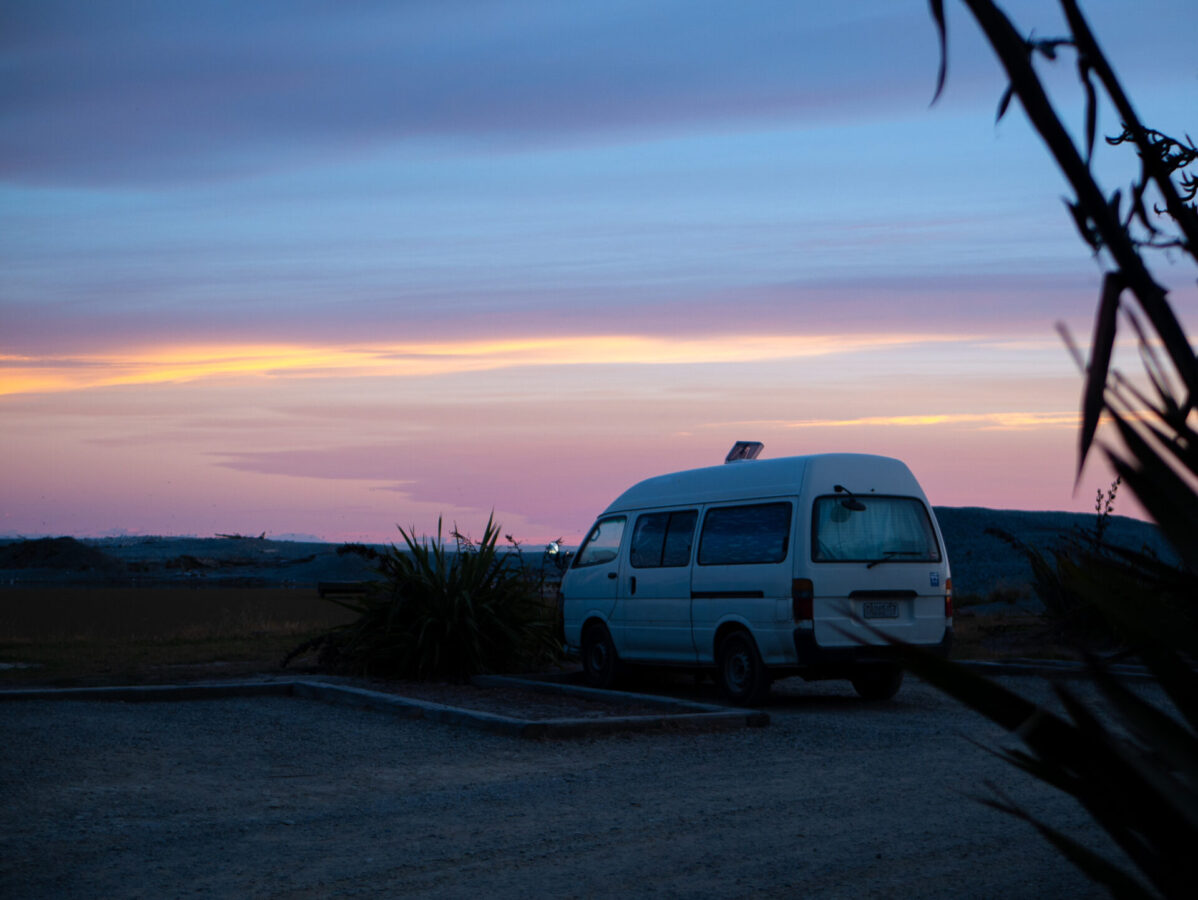
A van is a metal box, plain and simple. This material is at the whim of the weather, and so will you be if your van doesn’t have proper insulation.
Having insulation installed properly is ideal for temperature regulation which in turn also helps with moisture control. We opted to not put any insulation in our van because we bought the van already converted. Insulation needs to be done at the beginning of a van conversion before adding any walls or furniture, so if we wanted to add insulation at that point, we would have had to redo the entire van. I definitely wish we had insulation though because it would have made van life in New Zealand all the more comfortable!
Fans for hot weather and a diesel heater for cold weather are other options to use in addition to or in place of insulation, though without insulation they remain less efficient. We actually haven’t used either of these during our year in New Zealand. I’m sure they would have helped a bit, but we managed fine without them. In the future, however, I probably wouldn’t go another full winter in a van without BOTH insulation and a heater.
7. You won’t always have an ideal place to sleep.
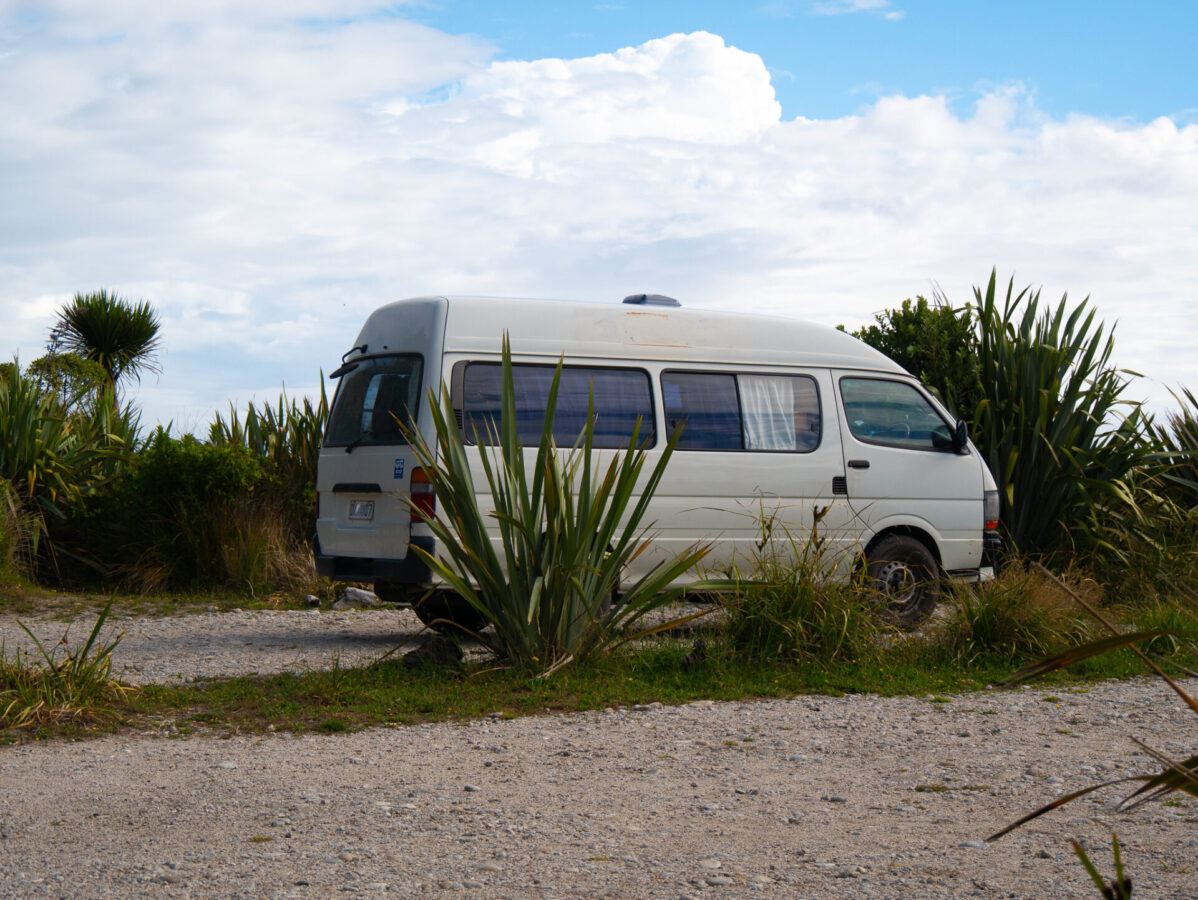
In the modern era of Instagram, most posts show only one side to van life: the beautiful places that you can wake up to. While these posts of course showcase some of the best aspects of van life, it just isn’t always like that every day.
While living in a van means waking up to some incredibly stunning locations, you will also sometimes be sleeping in less-than-ideal places. You will may spend some time sleeping in parking lots – and sometimes the streetlights will be so bright that you’ll have a hard time falling asleep. Sometimes your location may be next to a busy road, and so you’ll get woken up to traffic. Other times you might find that your parking place has only slanted spots, so your van (and therefore your bed) will be sideways rather than flat the whole night. And even still, if you find a gorgeous place but there are too many biting insects (like the dreaded sandfly), you may not even spend much time outside enjoying the natural beauty anyway!
In NZ specifically, since they have limited so much where freedom campers can park for the night, in some areas there is a lot of competition for spots. For example, in nicer beach areas like Papamoa Beach, if you don’t show up by midday you just don’t have a chance. In times like these, you are either forced to drive elsewhere for a free spot or give up and pay for a campground.
8. Choosing van life means you will be in the public eye.
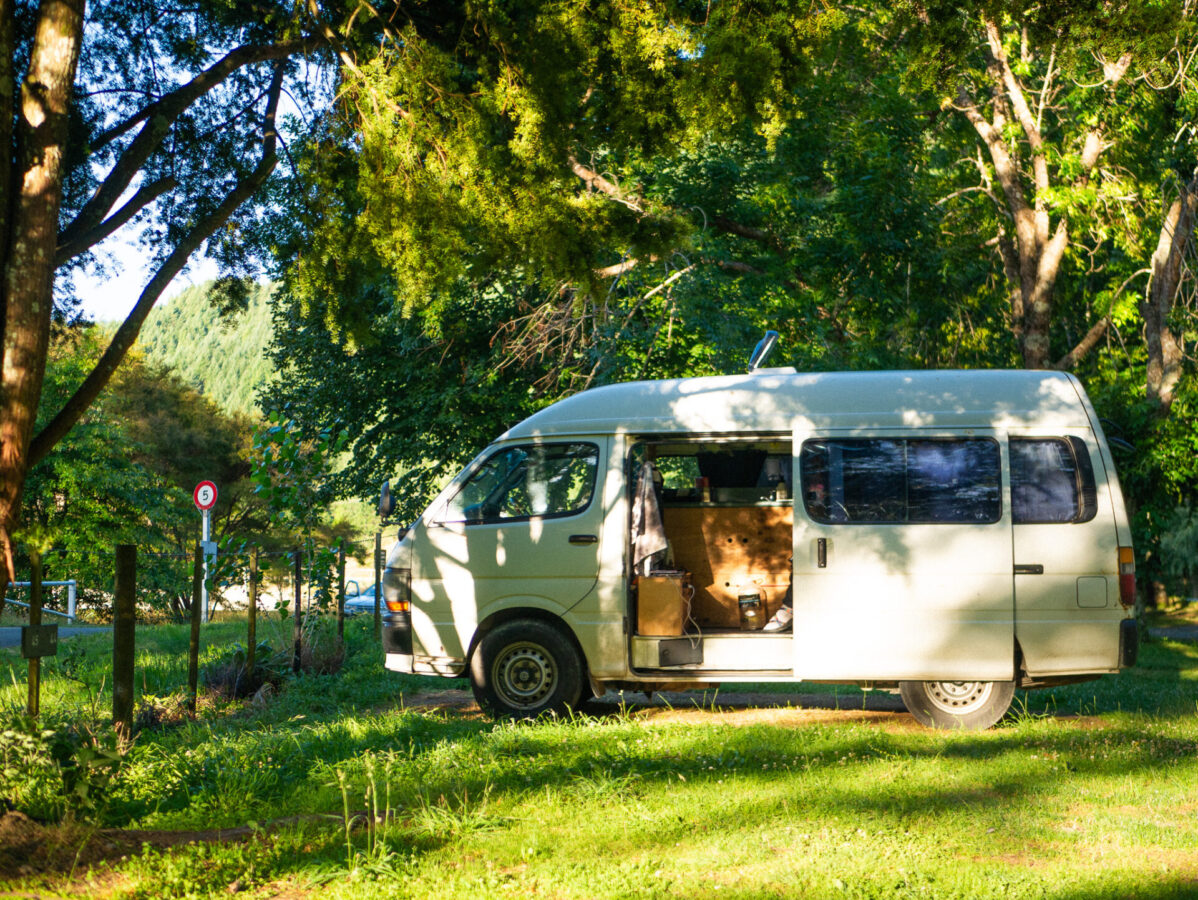
Get over it now. EVERYONE is gonna be checkin’ out you and your van. People are naturally curious and want to see what you got in there. People will constantly be looking inside and looking at you inside. I live in a van and I still find myself checking out every other van I see.
But being the object of so many gazes is also uncomfortable when I just want to be in my little house on wheels and left alone!
The blackout curtains and DIY tinted windows that came with our van have been a huge help with privacy and stealthiness, at least when all our doors are closed. While having blackout curtains are nice to have, you can’t drive with all of them closed! Unless you have dark tinted windows, people will still be able to see inside your little home any time you drive around.
9. Getting your mail can be logistically challenging while living in a van.
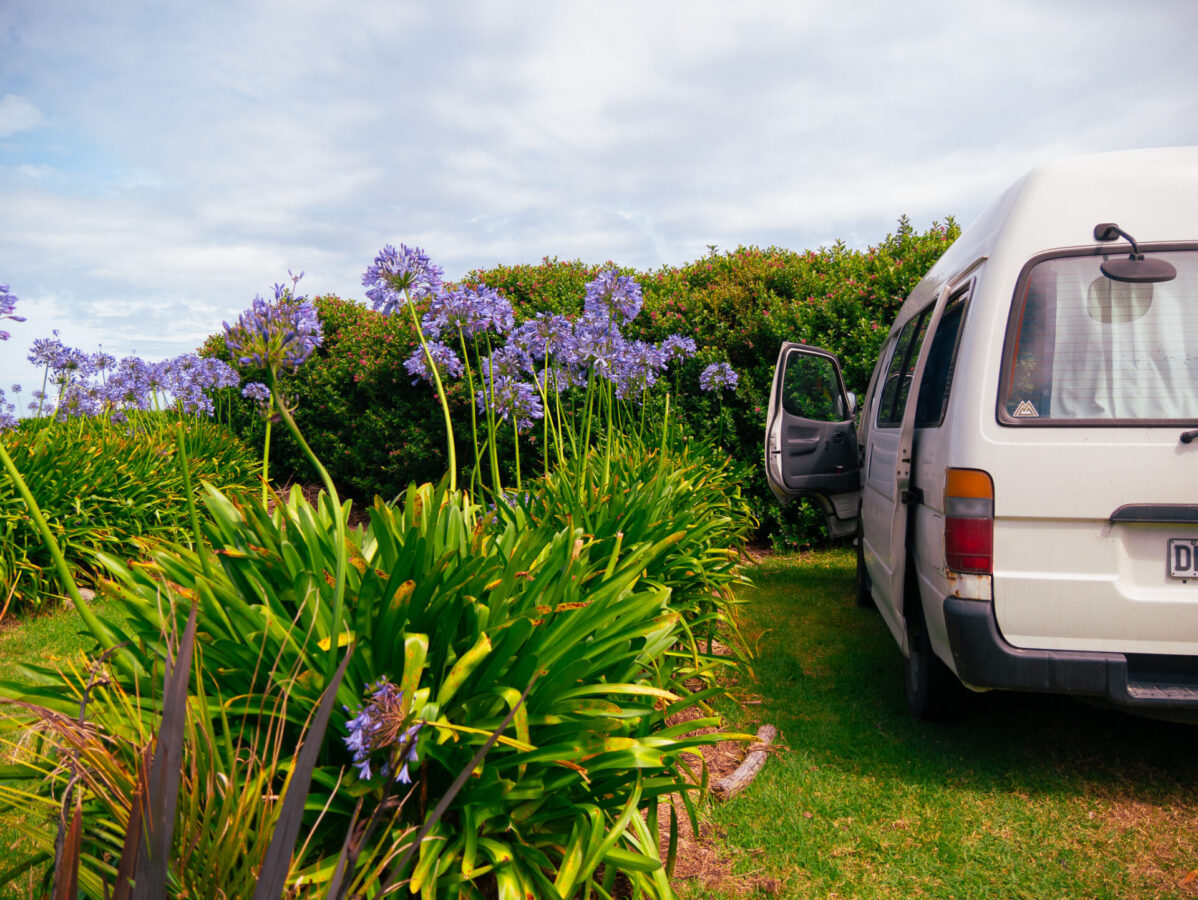
If your physical “address” is a different place every few days, then getting mail for anything will be a puzzle. Along that note, using an address for any services you need to sign up for will be a laughable matter. For example, when I first moved to New Zealand, I needed an address to sign up for a phone plan, to have car insurance, to get a grocery card, and to open a bank account.
Here are some ways to get around needing an address for these everyday situations:
PO Box
This wasn’t ideal in our situation in NZ because they only offer PO boxes for 12 months at a time. Though some locations offer transfers to other cities, they charge an extra fee for that and since we didn’t know how long we would be in any one location or if all our locations would be able to take a PO box transfer, we decided not to pay for one. Since we aren’t residents of New Zealand, we didn’t need many mail services here anyway. However, this can work a little better in the US because they offer 3, 6, or 12 month PO Box options.
Using a Box Lobby
We were able to use the box lobby in Queenstown as a place to send packages or any mail we receive while we were living there. We simply went and spoke to the clerk ladies who gave us the correct address to use and it was no problem. Not all box lobbies in New Zealand offer this, however, so it’s important to note that if you move to a new location you’ll have to go in person and ask about whether this is possible. I have heard that this is possible to do in the US, too. I believe a lot of thru hikers do this, though I haven’t personally tried it.
Note: If you’re planning to work in New Zealand, opening a bank account comes with its own set of challenges without a physical residential address. I wrote up a separate post about that here.
10. Repairing vans can be inconvenient and time-consuming.
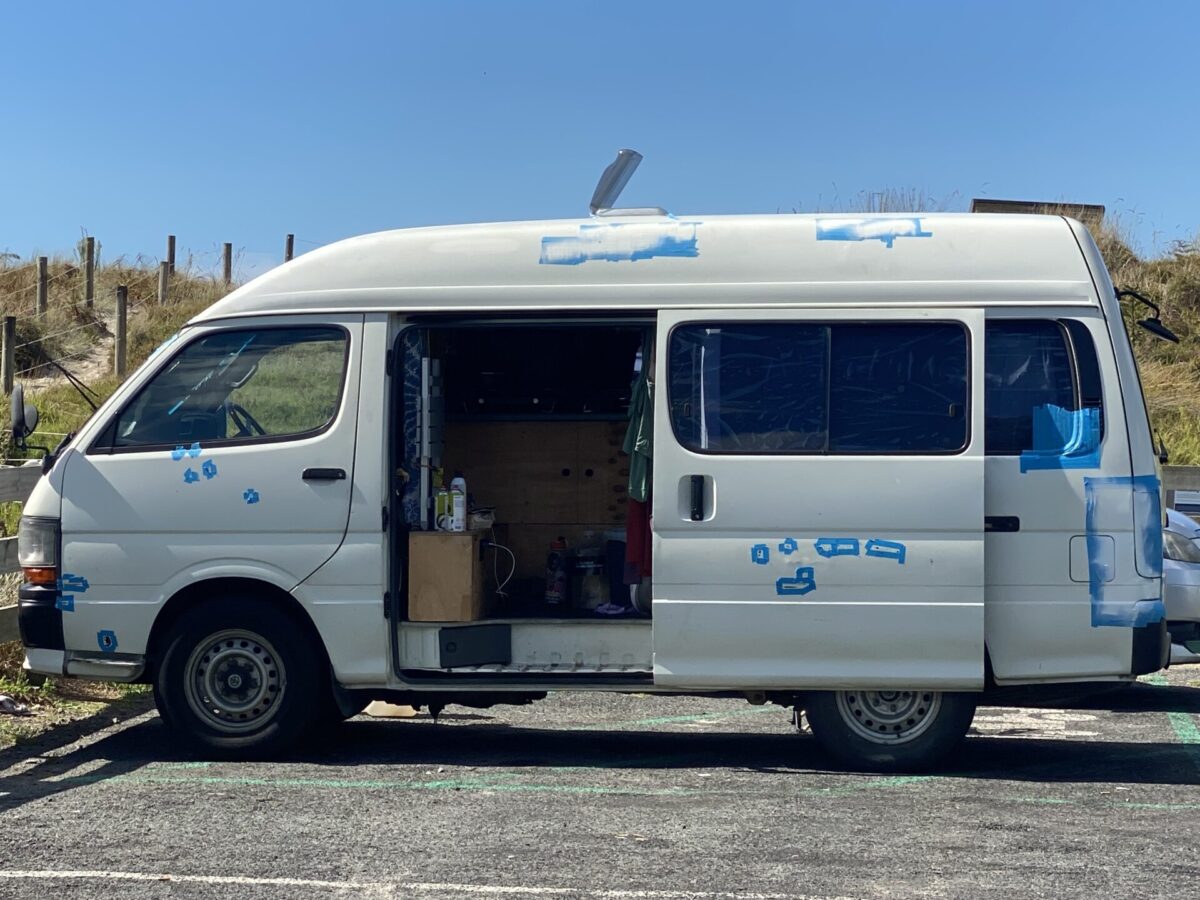
This one is particularly pertinent for any newbie van buyers in New Zealand. Many of the available converted vans in New Zealand were made in the 90s. While the majority of the models used for van conversion are reliable and long-lasting (a Toyota Hiace, for example, is known to run up to 500,000 km), due to age and mileage they simply require more repairs and maintenance than a newer van. This is nothing new in the world of cars; it’s just something to keep in mind when buying one.
Within the first three months of owning our van, we spent quite a bit of time and money to update the interior and pay for some repairs. Some of these were anticipated but not all of them. We had to get new breaks, new front tires, and repair parts to our suspension. Around this time we also removed the moldy panelling from the ceiling, had a roof vent installed for proper ventilation, and also bought a whole new bed setup. Later on, we spent some additional time and money to attach a new tapestry to the ceiling to make the van more cozy. Then, we did some DIY rust repair because our van had quite a few rust spots scattered around – we wanted to fix it before it got worse and ultimately so we could have a better chance of selling it at the end of our year in NZ.
All of this was necessary but a little inconvenient since we were living in it full time. A few times we had to drop our van off for a whole day or even overnight, which meant we had to pack some of our belongings and plan days or nights away from the van. When we did our own work on the van, we had to find parking lots where there weren’t a lot of people around so we could work in peace and not bother people. You don’t really think about how important having a driveway is until you don’t have one!
Basically, getting work done or doing your own work on a van that you also live in can be awkward and downright inconvenient.
11. There are clever solutions to having electricity and power while in a van.
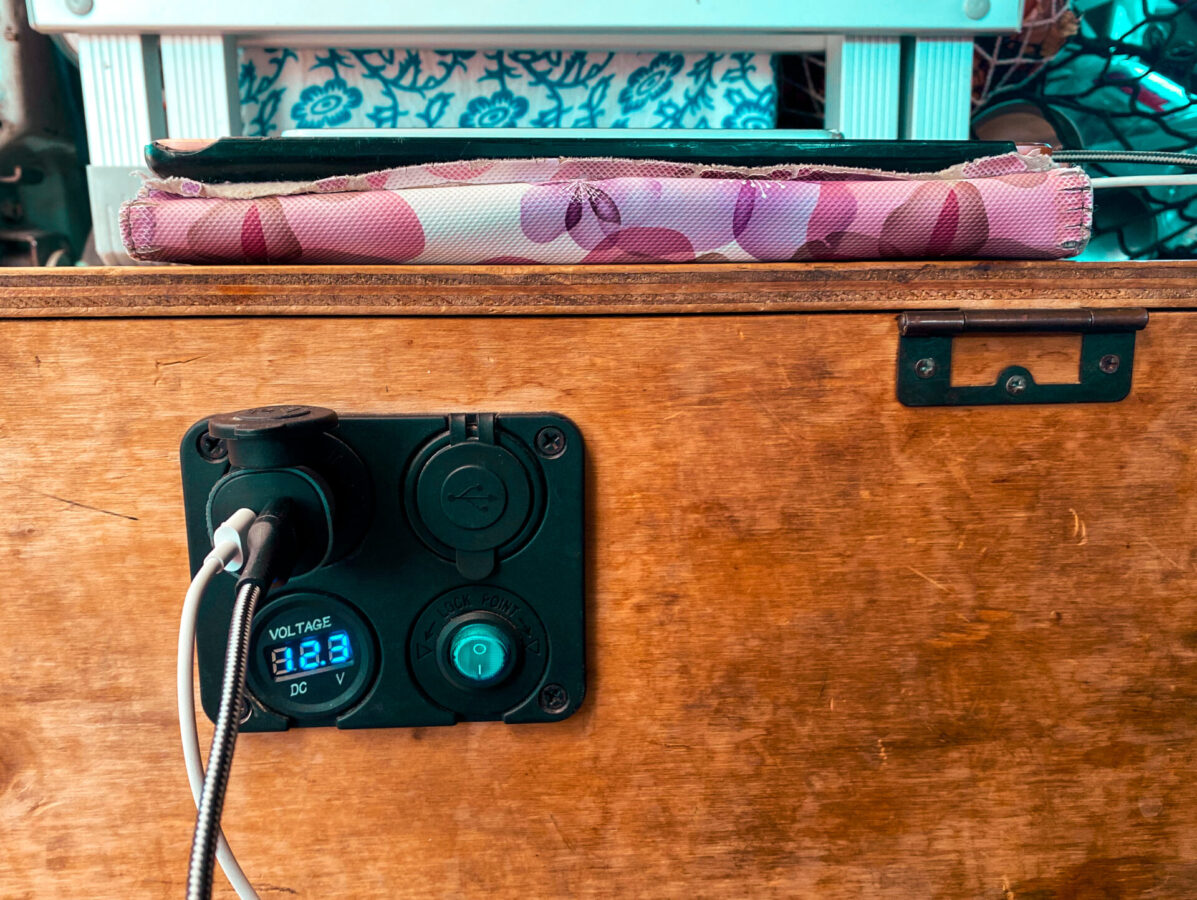
Yes, you can have electricity in your van! Here’s the lowdown:
Second battery
A second battery can be installed as a source of charging for low-energy devices such as cell phones, tablets, and LED lights. By connecting a second battery to your car’s battery, your second battery will charge any time you drive. So as long as you’re driving regularly, you should have plenty of charge for basic power in your van. The important thing with this is also having a battery isolator, which protects your main car battery from being drained by the second battery while the car is turned off.
Sine wave inverter
For powering bigger devices that require more energy, you’ll need a sine wave inverter. This connects to your second battery but safely converts the power to charge more complex devices such as laptops, minifridges, stoves, generators, and the like. Depending on your energy needs, there are different sized inverters that have various energy outputs to suit different needs.
Solar panel
Even better is hooking up a solar panel to your roof! These allow for additional power to be collected from the sun and is great so you won’t have to be reliant on your car’s battery alone.
12. Van life is the epitome of convenience and freedom. <3
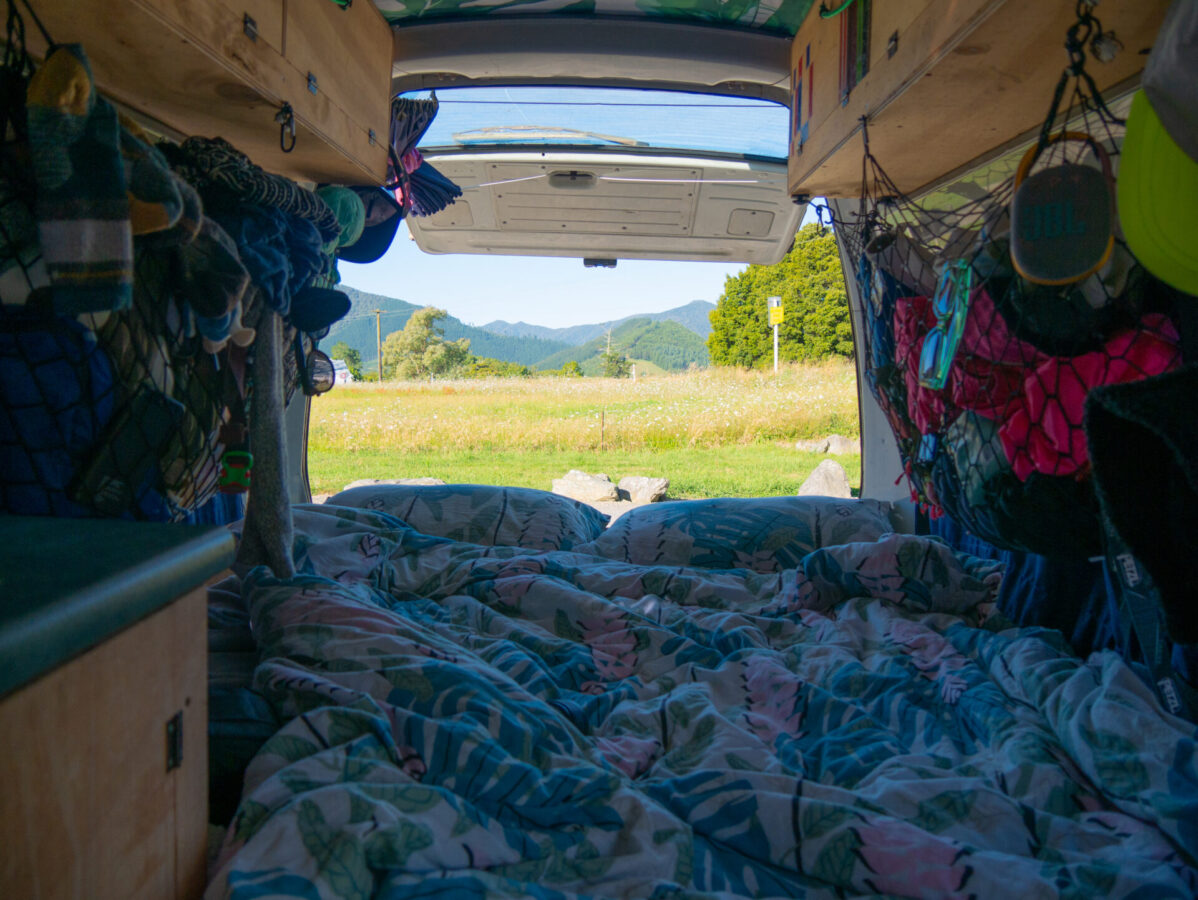
We all already knew this, right? I knew this going into it, and it has been reinforced again and again and again. Having a converted van is convenient AF!
Vans are small and take some adjusting but if done right can be sooo cozy and convenient! People who live in vans choose to for a reason. For those people, the little sacrifices are worth it. Once you get past some of the restrictions that come with van life, such as sacrificing space and certain home comforts, it truly is a freeing lifestyle experience.
Good luck & have fun!
Van life is the shit! I hope this post was informative and that you are more prepared to buy or convert your first van. Let me know in the comments about your van life escapades or if you have any questions! Please also share this post with a friend in need.
For further reading on van life in New Zealand, I have made a post about the pros and cons of freedom camping with the most important tips for freedom camping in New Zealand.


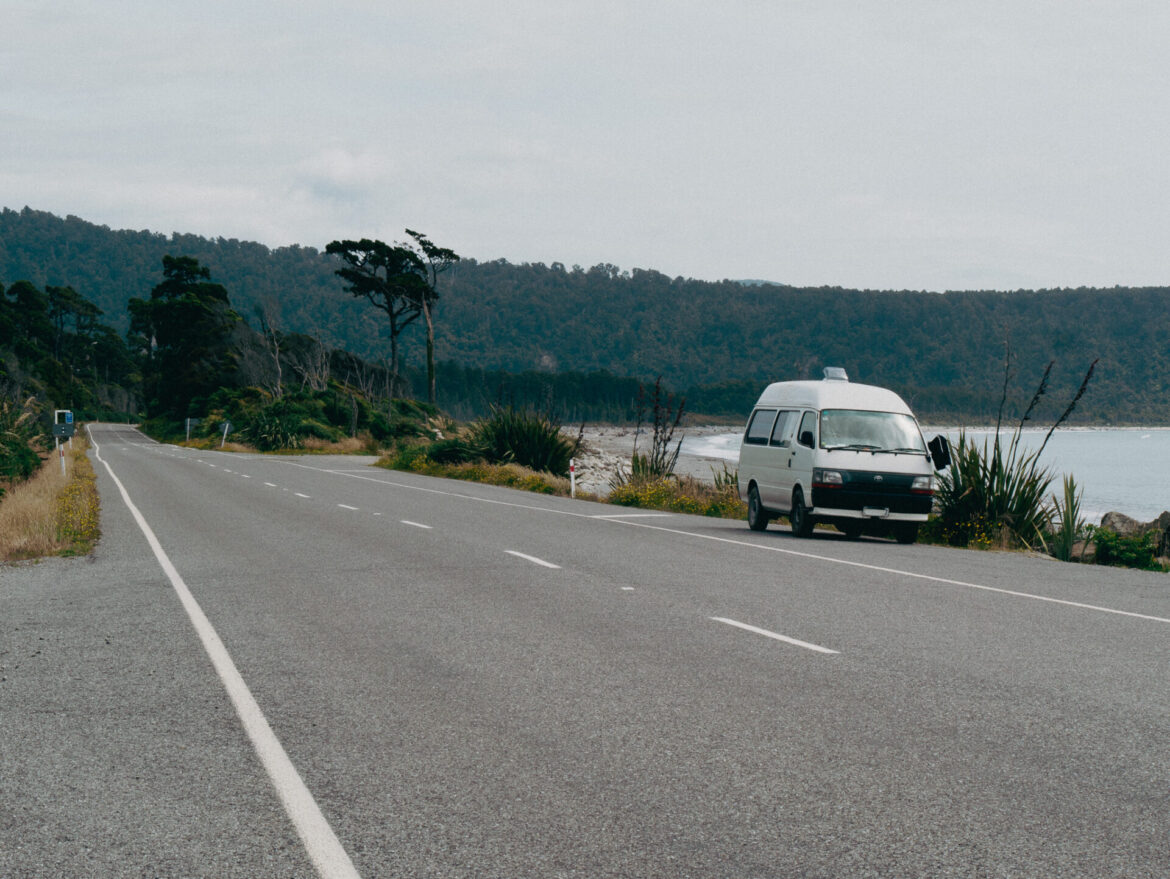
Leave a Reply